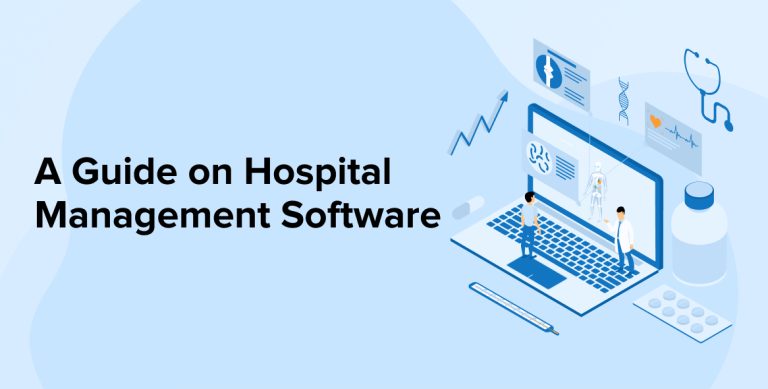
The necessity for medical services has surged in recent times. With the industry’s fast digitization, more software technologies and efficient processes are becoming available in medical facilities. Healthcare software solutions are developed to streamline everyday operations and handle billing, paperwork, and inventories to reduce the administrative burden on doctors.
The hospital management software system is one of the largest exclusive systems. In this post, we will examine Hospital Management Software(HMS), highlighting its primary benefits and features.
The market for hospital management solutions was valued at USD 30.70 billion in 2021 and is expected to reach USD 62.17 billion by 2027.
1. What is Hospital Management Software?
Hospital Management System (HMS) is software that automates various hospital operations, enhancing the efficiency of doctors and management staff members. It collects, stores, organizes, retrieves, and shares information about patients, healthcare practitioners, and staff members across the hospital. It helps provide quality services and improve patient care by making data-driven decisions at the right time.
HMS acts as the centralized and secure source of all information, from patient records to administrative and maintenance data. It allows healthcare practitioners and professionals to quickly access desired medical information. It is an integrated software solution that manages all aspects of a hospital’s workflow.
There are various components of a Hospital Management System, such as appointment management, patient record management, facility management, claims management, etc.
Hospital management software is designed to facilitate the collection, management, and analysis of data related to patient health and hospital operations.
The hospital management system(HMS) aims to streamline doctors’ workflows, minimize expenditures, eliminate mistakes, and improve patients’ health outcomes. Nevertheless, it involves a broad range of responsibilities, as the platform oversees each hospital division or department.
Healthcare systems store information about physicians and patients, such as their medical history, lab data, health products, consultations, invoices, and insurance, as well as reports to aid in overall patient care.
2. Types of Hospital Management Software
Here are several different types of hospital management software designed to enhance the efficiency and effectiveness of healthcare facilities.
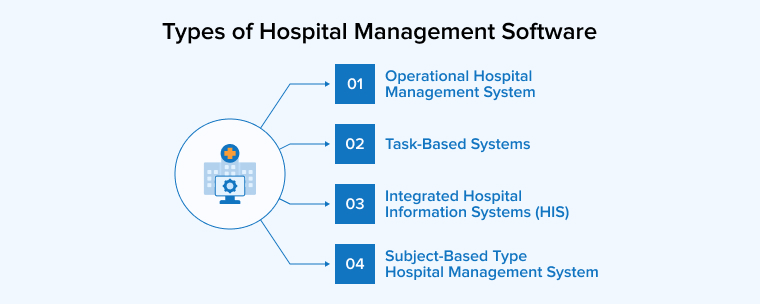
2.1 Operational Hospital Management System
Operational hospital management software is designed to manage the daily activities of a healthcare facility. Its main purpose is to manage, organize, and classify financial and operational data efficiently, ensuring the smooth running of hospital processes and helping healthcare organizations maintain financial stability. It keeps records of medical equipment and supplies and tracks their procurement and usage. It even provides a detailed view of patient-related financial transactions.
2.2 Task-Based Systems
Task-based systems manage the distribution of tasks among hospital staff members. They organize various tasks based on priorities and deadlines. It then assigns the tasks to the respective persons according to their availability and workload so that tasks are completed on time. It makes sure that only authorized members can access and execute the tasks. Task-based HMS even keeps track of the work progress and sends alerts and notifications to ensure timely completion.
2.3 Integrated Hospital Information Systems (HIS)
Integrated HIS deals with multiple aspects of hospital operations by bringing together functional modules such as patient management, appointment scheduling, inventory management, staff, and resource management into a single, cohesive system. This integration promotes collaboration across multiple departments and refines workflows across all functions. As a result, it increases operational efficiency by reducing redundancies and enhancing decision-making.
2.4 Subject-Based Type Hospital Management System
The subject-based hospital management system incorporates data from Electronic Health Records (EHR) and Electronic Medical Records (EMR) into the hospital’s subject-specific modules. It collects diverse patient data, including demographics, medical history, diagnoses, treatments, and prescriptions. This comprehensive approach provides a 360-degree view of a patient’s medical history, facilitating evidence-based decision-making and proper diagnoses. Additionally, this type of HMS gives access to up-to-date records for all healthcare providers.
3. Benefits Of Hospital Management Software
The following are the top benefits of hospital management systems
3.1 Easy Patient Data Retrieval
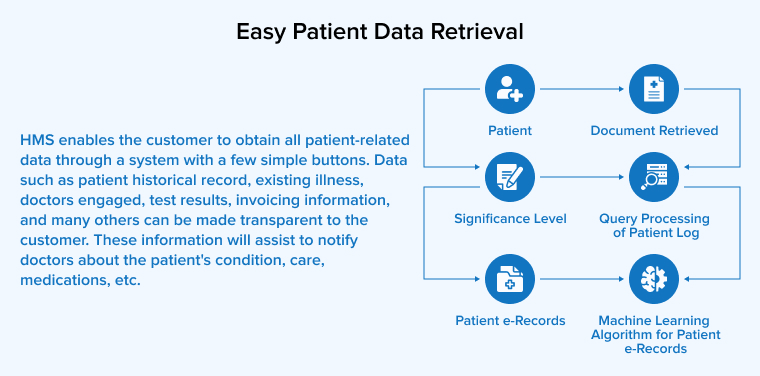
A Hospital Management System(HMS) enables easy accessibility to all patient information via a network with a few screen taps. Patient data, present disease, test results, and medical billing information will all be publicly disclosed to the healthcare providers. This information will assist in connecting the patient’s points, such as precise diagnosis, associated therapy, and drugs.
3.2 Reduced Costs and Workload
Health Information Systems promote cost savings in multiple ways. It automates administrative processes like patient registration and appointment scheduling, reducing the need for hiring extensive administrative staff and eliminating costly errors. These systems also monitor resource allocation and usage, reducing wastage of medical supplies and ensuring balanced resource utilization. It replaces paper-based systems with digital records, cutting paper printing and maintenance expenses. It automates the billing process, ensuring patients are billed promptly and correctly, and increases claim approval rates.
3.3 Improved Patient Experience
Enhancing the accuracy, accessibility, and reliability of hospital management software improves the quality of care and satisfaction. Additionally, it considerably enhances the productivity of a medical practice’s activities.
Appropriate data management can help avoid complications in medical services, like delays in providing emergency treatment. Therefore, hospital management software increases the quality and accessibility of healthcare for its primary patients, who are healthcare providers and patients.
3.4 Improved Workflow
Utilizing software that is capable of managing all forms of patient records, supplies, outcomes, and monitoring can greatly increase a hospital’s productivity. Additionally, the app dynamically analyzes information in real- time, leading to a faster operating process and the elimination of time-consuming, monotonous operations that people must perform.
As the second most common source of medical mismanagement, human mistakes may be greatly reduced by the adoption of the hospital management system. For instance, efficient data management reduces the possibility of duplication, document mistakes, and other problems.
4. The Core Feature of Hospital Management Software
Let us now study the characteristics of a hospital management system that makes it a comprehensive healthcare solution:
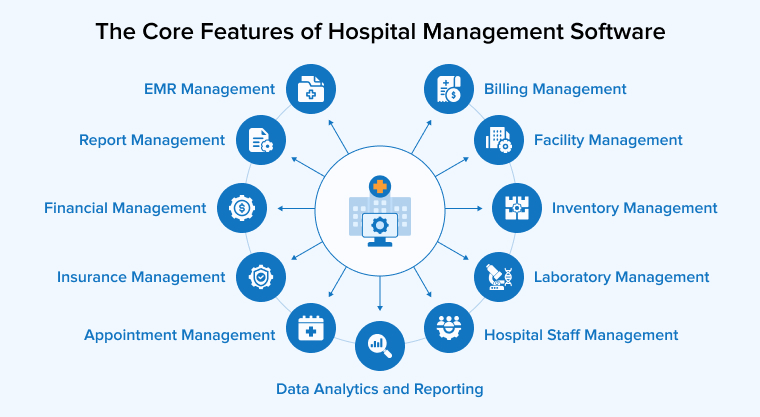
4.1 Appointment Management
When visitors schedule an appointment for a consultation, the hospital management system matches patients with the available expert or with the clinician they choose. It assigns patients based on their ailment and the doctor’s field of expertise.
If health treatment is required at the patient’s residence, the system verifies the availability of specialists for direct consultation. Likewise, assignment is determined by availability.
4.2 Facility Management
Each healthcare facility must monitor the availability of hospital beds, the occupancy situation of spaces with specialized treatment, and other pertinent information.
HMS collects the info on an entry basis so that you can stay updated with the current situation. Your assistant can effortlessly verify and relay data from the system to people who request it.
4.3 Billing Management
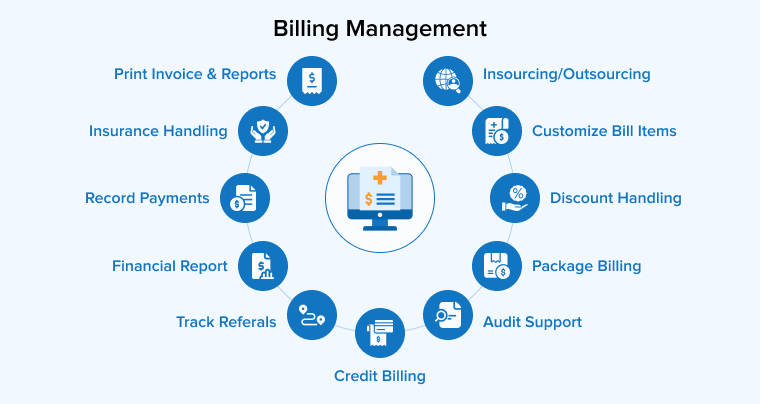
With the billing management feature, you can link your payment details according to therapies, laboratory tests, and radiography prescriptions. On Special offer Authorisation, notifications will be delivered. Fully automated collection of past due balances can also be paid, with the option to pay before and after using the counseling feature.
4.4 Hospital Staff Management
The staff management modules provide a crucial framework for the organization of human resources within your institution. It is updated with records like staff’s job role and operational field, along with critical data such as their info.
It enables you to become acquainted with healthcare staff without going through a mountain of papers. Additionally, it helps you organize the employment process according to the facility’s requirements.
4.5 Insurance Management
Insurance Management is a feature of HMS that collects and manages patients’ insurance information. It keeps data like the policy reference number or ID of policies issued under respective companies and other relevant details upon request.
The scripts used in such software make it seamless to work on facts and help in insurance validation, as well as add to overall patient billing as a record.
4.6 Laboratory Management
The laboratory management feature displays detailed information about the numerous lab tests conducted on individuals. It generates reports as required and preserves all data in one location. Customers can be notified automatically regarding test findings. Laboratory alerts, such as email and SMS, are issued from the Automatic Lab Alert component.
4.7 Electronic Medical Records (EMR) Management
Hospitals and clinics can digitize all the physical files and records of their patients’ medical history. Hospital management software serves as a centralized storage for all kinds of health records, including medical history, allergies, lab and test results, imaging reports, diagnoses, and medications etc. Having an integrated EHR in a software solution helps make better decisions, improve care coordination, and deliver better patient care. EHR is easily accessible by patients and hospital staff anytime, anywhere.
4.8 Inventory Management
HMS is equipped with robust inventory management features that track and handle the stock levels of various items, such as medical instruments, electronic equipment, medicines, and other supplies automatically.
HMS allows you to put a temporary limit on the inventory level. So, when the inventory at hospitals and clinics runs low, it enables the reordering process automatically. This helps minimize the risks of shortages and provides seamless patient care.
4.9 Data Analytics and Reporting
Medical professionals demand analytical reporting capabilities in their hospital management systems to enhance their understanding of processes and identify performance shortfalls. Additionally, by utilizing enormous volumes of information, financial figures can be more precise.
Smart analytics in hospital management software help discover key issues, such as excessive expenditure, limited information, transaction difficulty, or anything else. Additionally, it should contribute insights and recommendations to optimize customer care.
4.10 Financial Management
This element is in charge of the facility’s financial operations. It collects, saves, and shows the payment activity to patients or clients. Furthermore, it tracks the facility’s costs, income, and other financial information.This aggregation reduces the burden and effort associated with examining a monstrous stack of datasheets.
4.11 Report Management
The Report Management feature collects and saves all of the facility’s files. Accounting reporting examines productivity measures to assess the firm’s revenue cycle management. Additionally, it gives a comparative study of annual reviews over several years.
5. Limitations Of Hospital Management Software
Hospital management systems offer significant advantages in terms of improving efficiency, resource management, and cost savings. However, there are multiple challenges associated with the implementation of health management systems that must be taken care of to build an effective and secure system.
5.1 Data Privacy
Hackers and attackers frequently target medical facilities and healthcare management systems. Apart from user locations, phone numbers, and identifiers, mHealth applications and services gather medical records that can be potentially valued at thousands of dollars on the black market.
Patient records are one of the most important pieces in any healthcare system, and safeguarding them imposes certain constraints. There are some recommended approaches to improve data security in hospital management systems:
Train hospital personnel; prohibit entry to information and apps; establish data consumption rules; secure data; perform frequent risk evaluation; utilize off-site information backup;
Adhere to HIPAA’s privacy and security requirements.
5.2 HIPAA Compliance
The most effective method of protecting patient records is through HIPAA compliance. HIPAA’s purpose is to safeguard patients’ and medical professionals’ sensitive information. Regrettably, there is no comprehensive list of all HIPAA-compliant services, which sets limitations on the construction of a hospital management system.
5.3 Tolerance Issues
Though hospital management software helps streamline healthcare operations, the software has its limits. One major challenge when working with HMS is tolerance issues. A single software is not really capable of fulfilling a wide range of patients’ requirements. It may fail to cope with the workflow and give way to various inefficiencies.
For example, the same rigid protocols can’t easily adapt to the unique cases, leading to significant delays or miscommunication. Sometimes the software fails to integrate with other systems. As a result, the data inconsistencies increase and affect the decision-making capabilities of the healthcare providers.
6. Steps to Build Hospital Management Software
After understanding the strengths and shortcomings of the hospital management software, it’s time to take a look at the step-by-step guide to building a robust and reliable HMS.
Step 1: Conduct Market Research
Market research is the primary task before you start the development. You must be clear about your project requirements and objectives. Explore the depth of the healthcare domain and figure out the areas that can benefit from this type of software.
Identify the needs and preferences of all stakeholders, such as patients, doctors, hospital staff, etc. Evaluate existing software solutions in the market, their features, strengths, and limitations.
Find out how the hospitals are leveraging their hospital management systems. Conduct different surveys and interviews and go through industry reports, social media, professional boards, and online forums to substantiate your research with the appropriate statistics.
All these efforts will give you a clear picture of the software system you must develop to meet the actual needs, filling the gaps in the market and providing a feasible solution to increase your business’s profitability.
Step 2: Defining Software Requirements and Functionalities
After conducting market research, you might have gotten a rough idea of the features and functionalities you need to include in your system. Document the essential (must-have) and desirable (nice-to-have) functionalities. See whether the integration of these functionalities comes within your budget range or exceeds it. Develop wireframes to get a visual glimpse of the functionalities of the HMS to be developed. Based on that, you can refine the design and save the effort and time on rework in the future.
Step 3: Create the Design
The UI/UX design of the software must be according to the user’s goals, needs, and expectations. It is essential to study how users interact with other healthcare applications. Look at the design of the already existing HMS, and find out its best and worst from a user perspective. Figure out the interaction barriers in the design element. There must not be any unnecessary features in your application that can make users feel overwhelmed and confused. Keep in mind that your audience contains more non-technical users than technical ones; hence, the UI must be easy to understand and use.
Step 4: Build MVP
To speed up the development process and ensure you’re on the right track, build a minimum viable product (MVP) and release it for use. An MVP is a minimal version of your software product. It includes only the basic functions; for example, in the case of HMS, it would be appointment scheduling, storing patient records, billing, etc.
After release, it’s used by a section of real users, and they give their feedback. This feedback helps us understand your idea’s feasibility, effectiveness, and areas of improvement. It’s an iterative approach where continuous gathering of user input refines the product, leading to a robust solution.
Step 5: Release Software And Support It
After completing all the above stages, it’s time to implement the final product for all the users. Deployment is carried out in several stages, from infrastructure setup to testing and bug resolution. But deployment doesn’t mark the end of the development process. Software like HMS requires huge maintenance and support after its release. It would need continuous modifications based on user feedback and security practices. The HMS must always remain relevant as per the changing requirements and market conditions.
7. How Much Does it Cost to Develop Hospital Management Software?
The cost to develop Hospital Management Software (HMS) can vary significantly depending on several factors, for example, the complexity of the system, the desired features, the development team’s location, and many more.
7.1 Stage-wise Cost to Develop Hospital Management System
The precise budget of the HMS development is influenced by three factors:
- Your development team’s location
- Type of contract
- The project’s complexity
| Outsourcing | Rough Project Costs | |||
|---|---|---|---|---|
| Product Discovery | UI/UX Designer | Development | QA | |
| Eastern Europe | $30-70/hr | $30-70/hr | $30-80/hr | $15-60/hr |
| Western Europe | $50-100/hr | $50-100/hr | $60-100/hr | $30-65/hr |
| South America | $30-60/hr | >$40/hr | $30-60/hr | $25-70/hr |
| Asia | $20-30/hr | > $20-25/hr | >$25-30/hr | >$20-25/hr |
If you’re hiring a healthcare software development company from Asia, the expense begins at $150K and may increase to $200K with the addition of an admin dashboard for administering patients and physicians.
Another possible scenario: if you engage a company within Eastern Europe at a fee of $50 per hour, the total cost of developing a moderate hospital administration software would be around $500K. The fee includes research, user experience, user interface design, and production. If you choose to begin with MVP, the cost will be approximately $300K.
8. Hospital Management Software Development with Tatvasoft
TatvaSoft offers Hospital Management System software that provides innovative solutions in the healthcare sector. Our software delivers a wide range of advantages to hospitals and medical organizations.
These systems optimize administrative operations, enabling hospitals to handle patient information, arrange consultations online, and manage invoicing easily. This not only enhances efficiency but also minimizes the possibility of errors. Furthermore, the system improves patient care by including technologies such as Electronic Medical Records. It offers rapid access to patients’ medical history, prescriptions, and treatment options. Consequently, this leads to accurate diagnosis and tailored treatment.
Our system places great importance on security, guaranteeing the privacy of patient information through strong encryption. Additionally, it also manages to regulate access by adhering to established industry norms and rules.
9. Summary
Digital innovation is required in all sectors of modern life. Healthcare stands at the vanguard of this transformation, with the evolution of hospital management systems being a prime example.
HMS is designed to gather all electronic health records and automate the majority of hospital processes. There are several hospital management systems, and you are free to include any or all of those in your HMS.
The characteristics of hospital management systems are critical for their growth as the healthcare industry is shaping a new world. It is important to meticulously select functionalities for each user position to ensure they meet their requirements. Additionally, there is a privacy protection concern, so prioritizing integrating reliable solutions in the HMS to safeguard users’ information is necessary., We strongly encourage paying attention to things and designing an app that is as flexible and impartial as practicable.
If you have any further queries or want assistance in establishing a hospital management system, please do not hesitate to contact us. We will gladly assist you!
FAQs
What software do most hospitals use?
At present, electronic health record software is the most popular option among hospitals all over the globe. Electronic health records (EHRs) enable hospitals to keep and maintain a wealth of patient data, including healthcare information, treatments, medications, medical histories, and more.
What are the types of hospital management systems?
Two main kinds of HMS exist: those hosted in the cloud and those installed locally. The provider’s server hosts the hospital administration software, which is cloud-based or online. On the other hand, hospitals that use on-premise software typically have their own servers and data centers.
What are the key benefits of using hospital management software?
A hospital management system’s main advantages provides healthcare facilities with the ability to do the following:
- Budget optimization.
- Processes data more efficiently
- More effective treatment for patients
- Enhanced productivity across the board
- Making better decisions


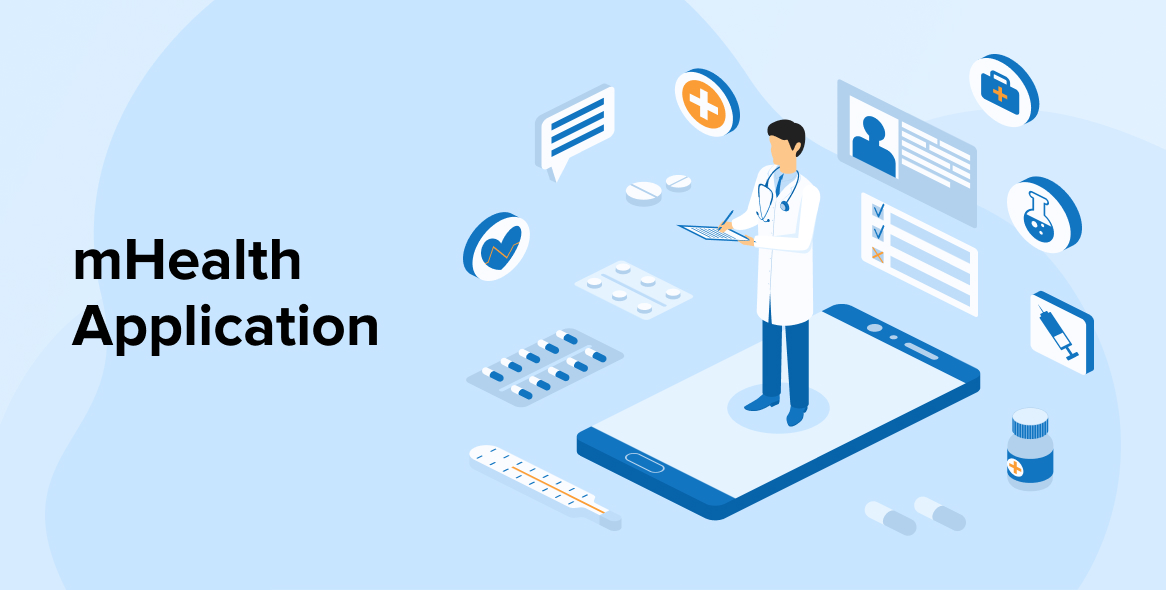

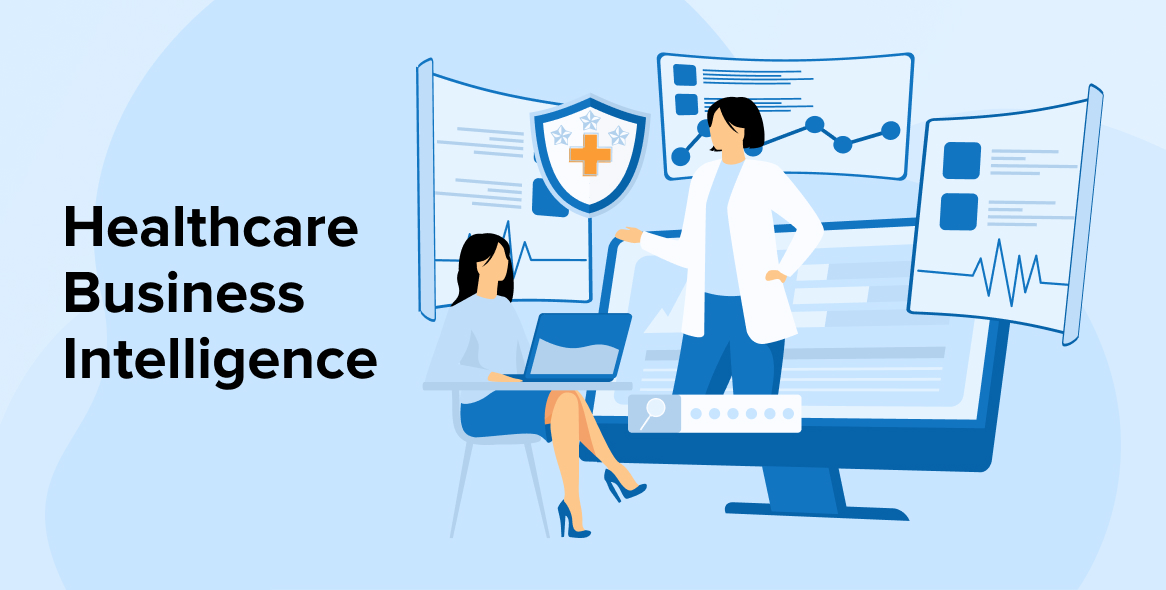

Being in the Healthcare Industry for the past 6 years I can vouch for the perks of a well-designed Hospital Management System. As it helps a healthcare provider in many ways, It eases an organization's complex and dynamic workload to an optimum level. The Blog written by you is well-curated and structured. I would like to have more insights into the healthcare industry from your perspective. Looking forward to your upcoming work.
Thanks for sharing the article on guidance about Hospital Management Software. It helps me a lot, as I am willing to develop Healthcare management software. Now I can work on it without any hassle. Keep Sharing!
I am considering implementing a new hospital management system for my small hospital, and this blog post has given me some good insights into what to look for in a system. Thanks for sharing this informative blog!
This article gives a good overview of hospital management software, including its benefits, core features, and limitations. I am interested in the features that you recommend looking for in hospital management software. I think these features are necessary for ensuring the success of hospital management software.
Overall, this is a good article. Personally, I found the section on the benefits of hospital management software to be very informative. I was particularly interested to learn about how these systems can improve patient care by providing clinicians with real-time access to patient data and reducing the risk of medical errors. I also found it helpful to see how hospital management systems can improve efficiency by automating tasks such as scheduling, billing, and reporting.
This article hits the nail on the head for healthcare professionals like myself! It dives into the real-world benefits of hospital management software, like improving patient care, Reduction in costs, and making patient data retrieval a breeze. Also, the improved workflow makes a noticeable difference in our day-to-day operations. I highly recommend this read to anyone in the healthcare field looking to boost efficiency and deliver even better care to their patients.
This information is invaluable for advancing my new hospital management software. With so many features to consider, I was confused which ones to prioritize. Thankfully, this blog gives clarity by outlining important features such as Appointment Management, Facility Management, Billing Management, Hospital Staff Management, Insurance Management, Laboratory Management, Inventory Management, and more.